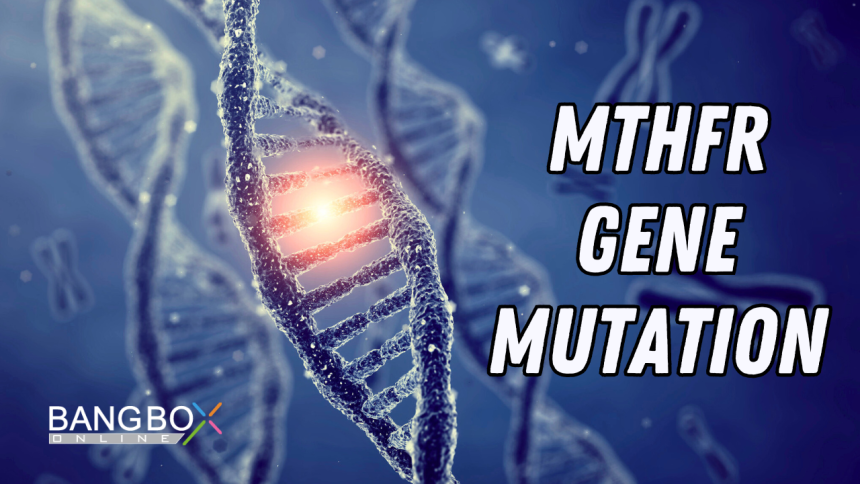
MTHFR Gene Mutation
MTHFR gene mutation is a condition that leads to a number of health problems including psychological issues for the sufferer. It can be tested through gene mutation test.
MTHFR GENE:
The MTHFR gene is found on Chromosome 1 and is involved in making Methylenetetrahydrofolate reductase. This is an enzyme that functions to process the building blocks of proteins, called amino acids. Particularly this enzyme is responsible for the conversion of folate into another type of folate, such as it converts 5,10- Methylene tetra hydro folate into 5- Methylene tetra hydro folate. 5- Methylene tetra hydro folate is present in the blood and converts homocysteine into methionine. Both homocysteine and methionine are the amino acids necessary for various functions in the body. Methionine is specifically involved in making essential proteins and associated compounds.
MTHFR GENE MUTATIONS:
Sometimes there may be some mutations that occur in this gene by chance. These mutations can lead to a number of health conditions listed below;
Homocystinuria: Around 40 MTHFR gene mutations have been known to date, that can lead to Homocystinuria. It is a condition in which a person’s body is unable to convert homocysteine into methionine. People suffering from homocystinuria can develop problems related to eyes, skeletal, and learning. These persons may also face abnormal patterns of blood clotting. Mutations causing homocystinuria, displace only one amino acid in the Methylenetetrahydrofolate reductase which can lead to impaired enzyme functioning or inactivation of the enzyme completely. Some other mutations can lead to abnormal enzyme production which is non-functional. A non-functional Methylenetetrahydrofolate reductase fails to convert homocysteine into methionine. Thus, levels of homocysteine rise in blood and relative methionine reduces. Although excess homocystinuria is regularly excreted through urination, investigations are still in progress about how these elevated levels of homocysteine can impose health-related problems and also influence other body parts in persons having homocystinuria. Hearing loss: Presbycusis is a condition in which hearing ability reduces with age. This can affect one or in most cases both of the ears. Persons with age-related hearing loss are unable to hear high-frequency sounds including speech and find it difficult to get what other people are talking specifically in a noisy area. But as this hearing loss is not sudden, a person loses his ability to hear gradually. So, the affected person gets used to it over time and doesn’t even realize that he is not able to listen that way. They start listening to television or radio at higher volumes or speak even louder by chance not aware of their disability. By the time this hearing loss gets even worse, this condition makes it more difficult for the affected person to hear more than speech, as it starts affecting more sound frequencies. Such people face difficulties in determining the direction of sound and more importantly, fail to identify the source of the particular sound. Among these affected persons, some may feel a sensation of constant ringing in the ears or slight dizziness along with problems related to body balancing. Presbycusis affects a lot the quality of a person’s life. The affected person fails to communicate or interact with others properly, because of impaired hearing abilities which makes it difficult for the person to understand what others are saying. In this way, age-related hearing loss may contribute to low self-esteem, depression and most importantly the person faces social isolation. This condition can also cause safety issues as the person is unable to hear safety alarms, traffic horns, etc. Alopecia areata: Alopecia areata is the most commonly occurring disorder because of the MTHFR gene mutation that leads to hair fall. Alopecia is a Latin word meaning baldness and areata means hair loss in the form of patches over the head. In persons affected with alopecia areata, hair is lost in small and round patches causing the appearance of bare skin on the scalp or other parts of the body. It can occur in people of all ages but most commonly occurs in adults. But alopecia areata-related hair loss is not painful, rather it can cause changes in the appearance of a person and can affect the self-esteem of the person. Most people suffering from alopecia areata get psychological issues including depression and anxiety. Anencephaly: Polymorphism or mutations in the MTHFR gene can also lead to health problems related to enhanced neural tube damage risks. Neural tube defects are birth defects that occur during the brain and spinal development of the fetus. Anencephaly is one of those neural tube defects. Persons affected with anencephaly may not have large parts of the brain along with no or improperly developed skull bones. In this mutation, there is a single nucleotide polymorphism in the MTHFR gene. Most of the time it replaces cytosine with thymine at 677C>T. This change can cause the production of Methylenetetrahydrofolate reductase which is thermolabile means its activity may reduce at higher temperatures. Such people have high levels of homocysteine in their blood. Among all mutations of the MTHFR gene, 677C>T polymorphism is the most common worldwide. Spina bifida: Some studies show the risk of spina bifida related to MTHFR mutations, which is another form of neural tube defect. In persons having this condition, during spine formation, their spine bones do not close properly around the newly developing nerves leading to permanent nerve damage. This mutation may occur due to the reduced activity of Methylenetetrahydrofolate reductase in which this enzyme fails to process folate. Other associated disorders: Due to the decreased functionality of Methylenetetrahydrofolate reductase, an increased level of homocysteine occurs. This elevated homocysteine leads to many other health problems mentioned below; 1. Hypertension (high blood pressure) 2. Blood clots 3. Pregnancy loss 4. Psychiatric disorders 5. And some types of cancers
MTHFR MUTATION TEST:
MTHFR gene mutation test includes the analysis of blood samples to look for mutations in this gene. As the genes are part of your DNA and your heredity material comes from your parents, they control the way your body works. A person has two copies of this gene, each coming from both parents. This gene is involved in the formation of the MTHFR protein that helps the body utilize vitamin B (folate) and break it into homocysteine. In normal cases, you have a very little amount of homocysteine in your blood and most of the homocysteine converts into methionine by Methylenetetrahydrofolatereductase. but if Methylenetetrahydrofolate reductase fails to function properly then the sufferer has high levels of homocysteine from which MTHFR mutation can be diagnosed.
TREATMENT:
Persons affected with these mutations can do a little thing as a natural remedy for this as they do not require medical treatment. - Consumption of more vitamin B12 - Maintain a good mental health - High essential supplement intake - Minimize alcohol consumption

Custom Boxes for Niche Products: How Tailored Packaging Drives Consume...
The packaging is the model for the product inside. People can judge the product quality, a...


